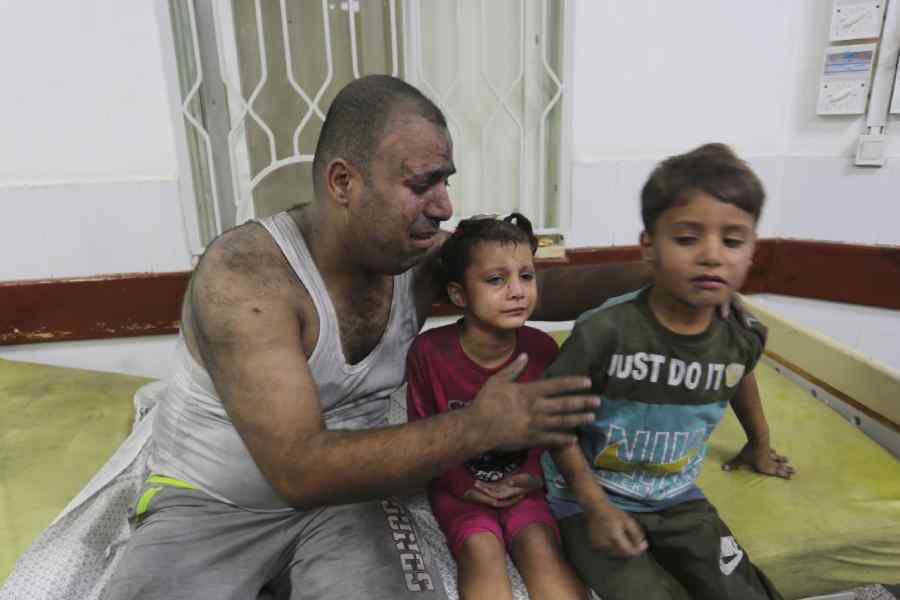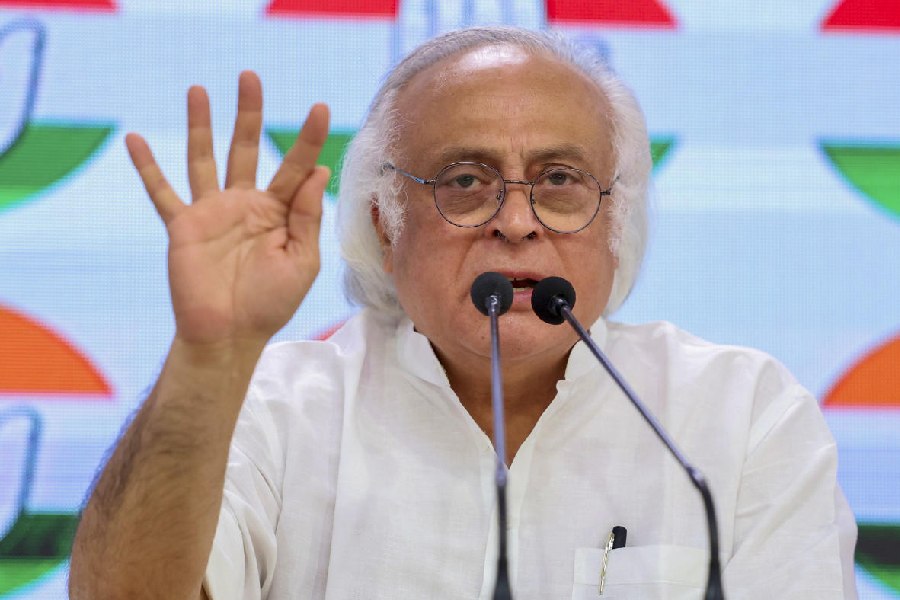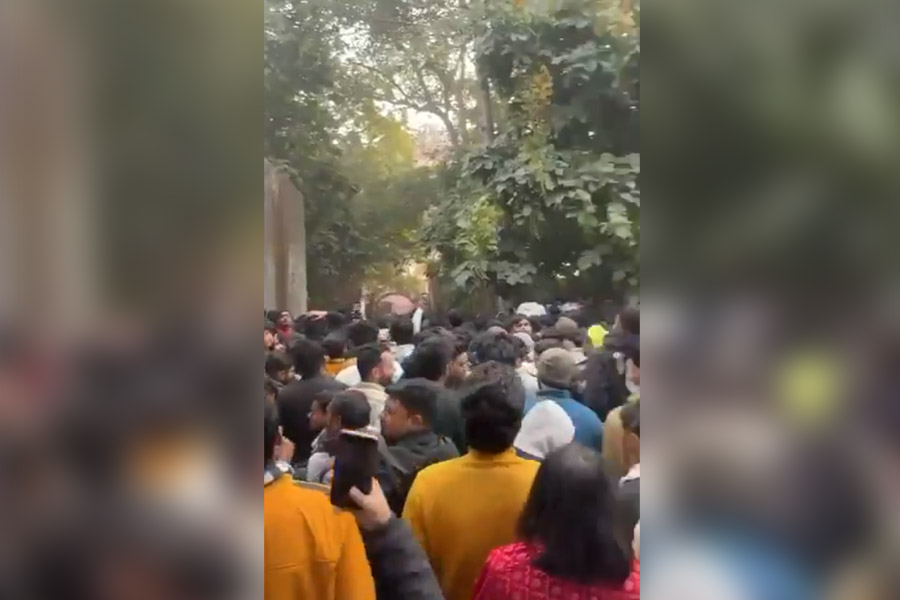Israeli troops and armour pushed deeper into northern and central Gaza on Monday, as the UN and medical staff warned that airstrikes are hitting closer to hospitals where tens of thousands of Palestinians have sought shelter alongside thousands of wounded.
Video footage obtained by the Associated Press showed an Israeli tank and bulldozer in central Gaza blocking the territory’s main north-south highway, which the Israeli military earlier told Palestinians to use to escape the expanding ground offensive.
When asked whether forces had positioned on the road, Israeli military spokesman Rear Admiral Daniel Hagari said “we expanded our operations” but would not comment on specific deployments.
The video shows a car approaching an earth barrier across the road, where a tank is parked behind a small building. The car stops and turns around.
As it heads away, the tank appears to open fire, and an explosion engulfs the car.
The journalist who was filming the scene from another car races away in terror, screaming, “Go back! Go back!” at an approaching ambulance and other vehicles. The Gaza health ministry later said three people were killed in the struck car.
The Israeli advances put their forces on both sides of Gaza City and the surrounding areas of northern Gaza, in what Prime Minister Benjamin Netanyahu called a “second stage” of the war ignited by Hamas’s brutal October 7 incursion.
Casualties on both sides are expected to rise sharply as Israeli forces and Palestinian militants battle in dense residential areas. Hundreds of thousands of Palestinians remain in the north and would no longer be able to escape if the north-south highway is blocked.
Around 117,000 displaced people are staying in hospitals in northern Gaza, alongside thousands of patients and staff, hoping they will be safe from strikes, according to UN figures.
Most residents heeded Israel’s orders to flee to the southern part of the besieged territory, but many stayed in part because Israel has also bombarded targets in so-called safe zones.
The death toll among Palestinians passed 8,000, mostly women and minors, the Gaza health ministry said.
The toll is without precedent in decades of Israeli-Palestinian violence. More than 1.4 million people in Gaza have fled their homes. Over 1,400 people have died on the Israeli side, mainly civilians killed during Hamas’s initial attack, also an unprecedented figure.
Israeli forces appeared to be driving deeper into Gaza from the north. Video footage released on Monday by the military showed armoured vehicles moving among buildings and soldiers taking positions inside a house.
Hagari said additional infantry, armoured, engineering and artillery units had entered Gaza and the operations would continue to “expand and intensify”, though Israel has stopped short of calling its operations an all-out invasion.
The military said on Monday that overnight its troops had killed dozens of militants who attacked from inside buildings and tunnels. It said that in the last few days, it had struck more than 600 militant targets, including weapons depots and anti-tank missile launching positions. The reports of targeting could not be independently confirmed.
Hamas’s military wing said its militants clashed with Israeli troops who entered the northwest Gaza Strip with small arms and anti-tank missiles. Palestinian militants have continued firing rockets into Israel, including toward its commercial hub, Tel Aviv.
Also on Sunday, the largest convoy of humanitarian aid yet — 33 trucks — entered southern Gaza from Egypt. Relief workers say the amount is still far less than what is needed in the territory, where the population of 2.3 million people has been running low on food, water, medicine and fuel after weeks under Israeli siege. On Saturday, crowds of people broke into four UN facilities and took food supplies in what the UN called a sign that civil order was starting to break down amid increasing desperation.
Israel’s siege has pushed Gaza’s infrastructure nearly to collapse. With no central power for weeks, hospitals are struggling to keep emergency generators running to operate incubators and other life-saving equipment. The UN agency for Palestinian refugees, known as UNRWA, has been trying to keep water pumps and bakeries running. Last week, UN officials said hunger was growing.
The increase in aid trucks came after US President Joe Biden emphasised to Netanyahu “the need to immediately and significantly” increase the entry of humanitarian aid, the US said. Israel also opened two water lines in southern Gaza within the past week, according to the Israeli military body responsible for Palestinian civilian affairs. The Associated Press could not independently verify that either line was functioning.
Communications were restored to most of Gaza’s 2.3 million people on Sunday after more than a day without phone and Internet services.
Meanwhile, crowded hospitals in northern Gaza came under growing threat. Strikes hit near Gaza City’s Shifa and Al Quds hospitals and the Indonesian hospital in northern Gaza in recent days, the UN and residents said on Monday.
All 10 hospitals operating in northern Gaza have received evacuation orders in recent days, the UN’s office for the coordination of humanitarian affairs said. Staff have refused to leave, saying evacuation would mean death for patients on ventilators.
Tens of thousands of civilians are sheltering in Shifa Hospital, the territory’s largest. Israel accuses Hamas of having a secret command post beneath the hospital but has not provided much evidence. Hamas denies the allegations.
Strikes hit within 50 metres of Al Quds Hospital after it received two calls from Israeli authorities on Sunday ordering it to evacuate, the Palestinian Red Crescent rescue service said. Some windows were blown out, and rooms were covered in debris. It said 14,000 people are sheltering there
Israel says it targets Hamas fighters and infrastructure and that the militants operate among civilians, putting them in danger.
The military escalation has increased domestic pressure on Israel’s government to secure the release of 239 hostages seized by Hamas fighters during the October 7 attack.
Hamas says it is ready to release all hostages if Israel releases all of the thousands of Palestinians held in its prisons. Desperate family members of the Israeli captives met with Netanyahu on Saturday and expressed support for an exchange. Israel has dismissed the Hamas offer.
“If Hamas does not feel military pressure, nothing will move forward,” Israeli defence minister Yoav Gallant told families of the hostages on Sunday. The fighting has raised concerns that the violence could spread across the region. Israel and the Lebanese militant group Hezbollah have engaged in daily skirmishes along Israel’s northern border.
In the West Bank, Israel said its jets carried out airstrikes against militants clashing with its forces in the Jenin refugee camp, the scene of repeated Israeli raids.
AP/PTI












